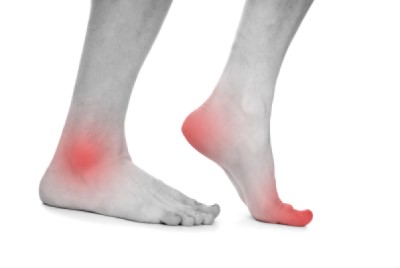
Some people choose their shoes because they like the style or color. Other people choose their shoes because they fit the requirements by their job. Then, there are the people that choose shoes based on the comfort and support provided. A combination of these things can often contribute to the choice of shoes. However, many people do not realize the importance of properly fitting footwear.
When choosing shoes is it important to look for a few things. Some people do not know why the fit of a shoe really matters. Improperly fitting footwear is a common cause of foot and ankle injuries. They can also further exacerbate other health conditions that are common. Seeing a podiatrist to assist in the process of choosing properly fitting footwear is also a great idea. It will help eliminate some of the guesswork for what kind of shoes to get.
Proper Shape
First, it is important to choose shoes that take the natural shape of the foot. The heel should not be slipping around and the ball of the foot should fit into the widest part of the shoe. Pointed toes often cause the foot to be squished into the shape of the shoe, which is not good.
Signs Your Shoes Don’t Fit
- Pain and discomfort
- Callouses
- Blisters
- Bruising on toenails
- Skin irritation (especially around toenails)
- Bruising on the tips of toes
Here are some tips when going to the store to buy footwear:
- Keep heels less than 2 ¼ inches tall. Too high of a heel can put unnecessary pressure on the ankle and balls of the feet which can cause injuries over time.
- Consider shopping at the end of the day after walking around. This means your feet are more swollen than usual, and thus it is easier to be sure the shoes still fit, even with swollen feet.
- Make sure the shoes are not ones that have to be broken in later. Walk around in them to make sure they are comfortable both walking and standing.
- Remember that not all shoes fit the same way, so do not rely solely on size, and be sure to try on both shoes to ensure they do not only fit one foot properly.
Another thing to consider if foot pain persists no matter what type of shoe, is a custom orthotic. Many people think it is only important to get orthotics if they have a specific condition such as plantar fasciitis, arthritis or diabetes. However, custom orthotics are a good idea for most people. A custom orthotic will help provide the kind of comfort needed for the individual. A certified podiatrist would be best suited to help each individual find the orthotic that works best for each individual’s feet.
Shoes and orthotics cannot solve everyone’s foot problems. They can help reduce some of the pain, but it is important to see a podiatrist to understand what things are causing the issues. Podiatrists can help devise a diagnosis and treatment plan to help reduce foot pain or injuries. Dr. Panesar is a Board Certified Podiatric Surgeon who can provide advice on what kind of shoes or orthotics would work best for each individual, and he can determine whether the problem goes deeper than just improperly fitting shoes. Even if a custom orthotic or shoe is not ordered, a podiatrist can help provide recommendations for things to avoid or to purchase in order to help avoid any further foot problems that might occur from improperly fitting shoes.
Do you have pain in your feet? Our foot and ankle specialists are here for you. Click here to contact Miller Orthopedic today for a consultation.

